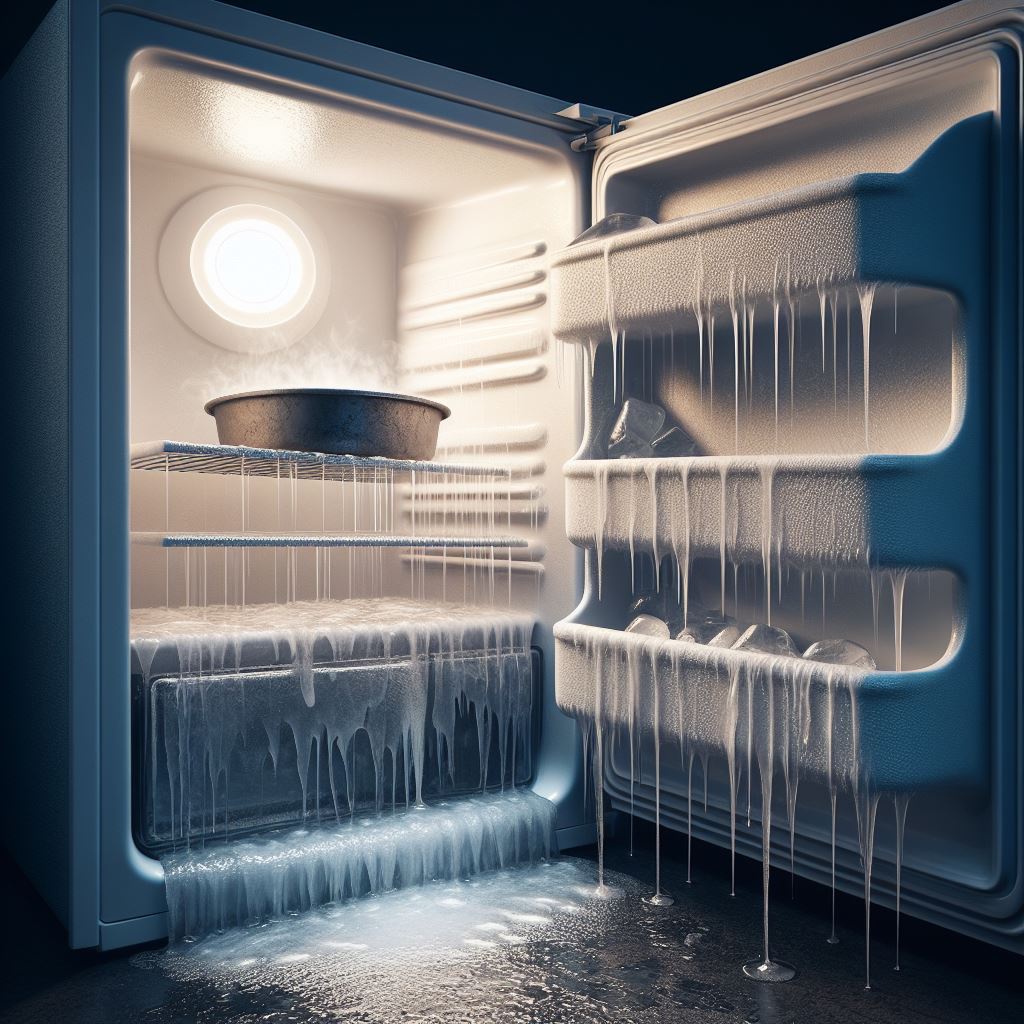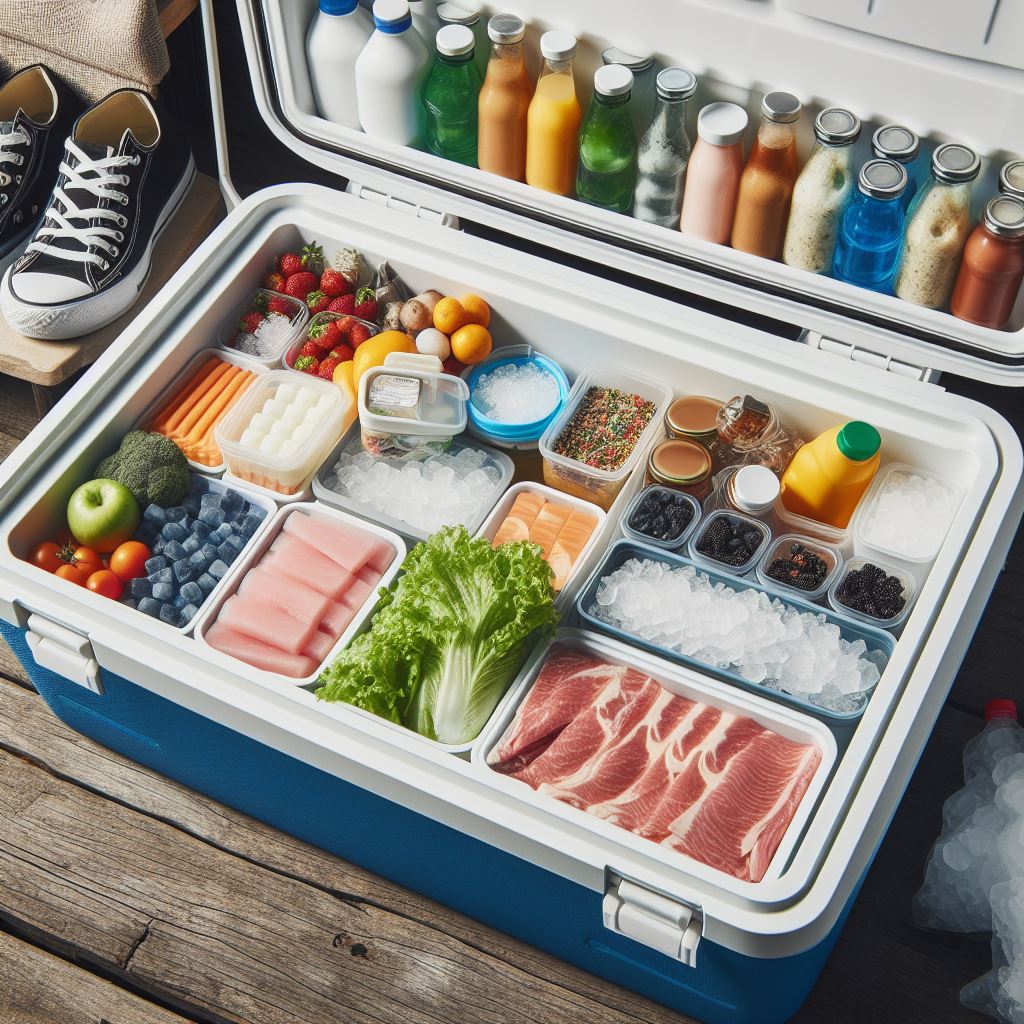Moving day can be a stressful experience, but with careful planning, you can ensure your fridge makes the journey safely and efficiently. This guide provides a step-by-step process for packing your refrigerator for moving, along with essential tips for fridge moving safety and preparation.
Fridge Moving Checklist: Essential Steps
1. Defrost and Clean the Fridge

- Defrosting: Turn off and unplug the fridge at least 24 hours before moving. Remove all food and store it in coolers with ice packs. Absorb any defrosting water with towels and ensure the freezer is completely defrosted before cleaning.
- Cleaning: Use a solution of warm water and baking soda to clean the interior surfaces. Wipe down any remaining moisture and leave the fridge doors open for 24 hours for thorough drying.

2. Secure Fridge Components
- Removable Parts: Remove shelves, drawers, and any other loose parts. Clean and dry them thoroughly before wrapping them securely for separate transport. If you're replacing your fridge with a new model altogether, you can explore our wide selection of Fridge Freezers.
- Door Security: Secure the fridge door shut with rope or moving straps to prevent it from swinging open during transit.
3. Fridge Protection
- Interior Packaging: Consider using baking soda boxes to absorb lingering odours.
- Exterior Protection: Wrap the entire fridge with blankets or a padded cover to shield it from bumps and scratches.
4. Safe Fridge Manoeuvring

- Floor Protection: Utilise furniture sliders or rubber mats to safeguard your floors from scratches while moving the fridge.
- Moving the Fridge: Employ a dolly for better leverage. Secure the fridge with straps and enlist helpers to navigate doorways and onto the moving truck. Provide additional protection with moving blankets during transport.
5. Fridge Re-Activation at the New Place
- Settle the Fridge: Once at your new home, let the fridge sit upright for several hours before plugging it back in. This allows the compressor oil to settle, preventing malfunctions.
- Temperature Regulation: Allow the fridge to reach its optimal temperature before restocking with perishable items.
Refrigerator Moving Tips for Safety and Efficiency
- Plan Ahead: Schedule defrosting well in advance to avoid last-minute delays on moving day.
- Inventory and Sort: Take stock of your fridge contents and purge any expired or unwanted items before packing.
- Consider Fridge Transport: If you're concerned about the weight or size of your fridge, hiring professional movers experienced in appliance transport is a safe and secure option.
- Packing perishable items: Ensure proper cooler packing with sufficient ice packs to maintain safe temperatures during transport.
- Interstate Moves: Research any specific guidelines or regulations regarding refrigerator transport across state lines.
Ensuring Food Safety During Your Fridge Move
Moving doesn't have to compromise food safety. Here are some key practices to follow:

- Maintain Cold Chain: Pack perishable items in coolers with sufficient ice packs. Aim for a constant temperature below 4°C (40°F) to prevent bacterial growth. Group similar food items together (e.g., meats, and dairy) to avoid cross-contamination.
- Prioritise Quick Transport: The shorter the fridge remains unplugged, the safer your food. If possible, plan your move to minimise travel time, especially during hot weather. Consider using a moving service specializing in temperature-controlled transport for long journeys.
- Thaw Carefully: If you must transport frozen food, plan. Pack frozen items in well-insulated containers or coolers with ice packs. Partially thaw large items beforehand to speed up the process and minimise the risk of reaching unsafe temperatures in transit.
Shared Moving? Fridge Hygiene Tips
Coordinating a move with others can increase the risk of food contamination. Here's how to practice safe fridge hygiene:
- Clear Communication & Labelling: Clearly label all your fridge contents with your name and “Do Not Use After” dates. Communicate these dates to anyone using the fridge during the move.
- Separate Storage: If possible, designate separate shelves or compartments for your food and those of others. Utilize airtight containers for leftovers or opened packages to prevent odours and cross-contamination.
- Sanitize Thoroughly: After the move, give your fridge a complete clean with a solution of warm water and vinegar (or a mild disinfectant if appropriate for your fridge material). Pay particular attention to shelves, drawers, and any areas that may have come into contact with spills or leaks.
Tackling Moving Day Mishaps
Even with careful planning, mishaps can happen. Here's how to tackle common fridge-related problems:
- Spills: Act quickly! Address spills immediately using paper towels or a clean, absorbent cloth. If the spill is significant, remove shelves or drawers for easier cleaning. Consider using a disinfectant wipe for a final sanitization step.
- Minor Leaks: Small leaks during transport can occur. If you notice puddles around the fridge, identify the source and address it if possible (e.g., retighten loose connections). Thoroughly clean the affected area to prevent mould growth. For significant leaks, consult a qualified appliance repair professional.
Limited Cleaning Supplies on Moving Day?
Moving often involves limited resources. Here are some tips for cleaning your fridge on the go:
- Natural Cleaning Power: If you're short on supplies, a simple solution of warm water and baking soda can be surprisingly effective for cleaning fridge surfaces. Baking soda also helps absorb lingering odours.
- Repurpose Paper Towels: While not ideal for heavy-duty cleaning, paper towels can be used in a pinch to wipe down spills or remove loose food debris.
- Improvised Disinfection: If disinfecting wipes are unavailable, consider soaking a clean cloth in a diluted vinegar solution (1 part vinegar to 3 parts water) for a mild sanitising effect.
Model-Specific Considerations
Always refer to your fridge's manual for specific instructions related to moving. Some models may have special requirements, such as:
- Water Dispenser Lines: Certain fridges require draining water from dispenser lines before transport. Consult your manual for the recommended procedure to avoid internal leaks.
- Built-In Ice Makers: For fridges with built-in ice makers, turn off the ice maker and empty the ice bin before moving.
By following these considerations and practical tips, you can ensure a smooth and food-safe fridge move, even in less-than-ideal circumstances.
Considering Upgrading Your Fridge? Moving to a new home can be a perfect opportunity to consider a new fridge! We offer a wide variety of options to suit your needs and space. View our best options below!
Bedroom Mini Fridges Car Fridges Energy Efficient Fridges Freestanding Kitchen Fridges Freezers Fridge Freezers Kitchen Fridges Mini Fridges Office Fridges Portable Fridges Quiet Fridges Small Car Fridges Small Fridges Small Office Fridges Small Quiet Fridges Wine fridges
Frequently Asked Questions (FAQs) about Moving a Fridge
1. How long should I defrost my fridge before moving?
Allow at least 24 hours for defrosting to ensure all ice has melted completely.
2. Can I lay a fridge flat when moving it?
While possible in some situations, it's generally not recommended. Consult your fridge's manual for specific guidelines, as laying some models down can damage the compressor.
3. What's the best way to clean my fridge before moving?
A simple solution of warm water and baking soda is an effective and natural cleaning agent for your fridge interior.
By following these comprehensive instructions and safety tips, you can ensure your fridge makes a smooth transition to your new home, ready to keep your food fresh and organised.